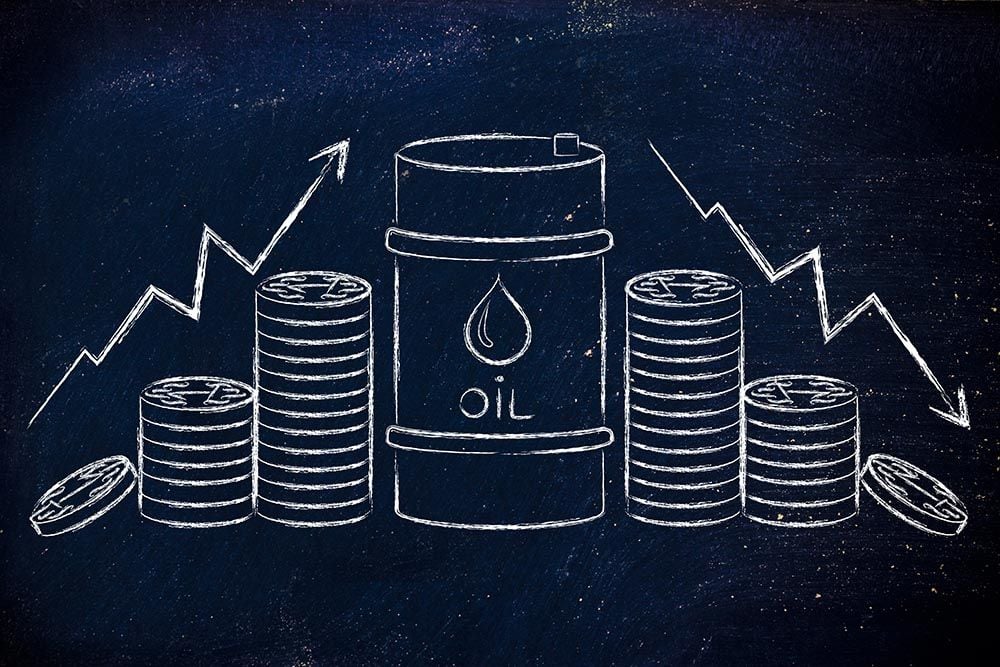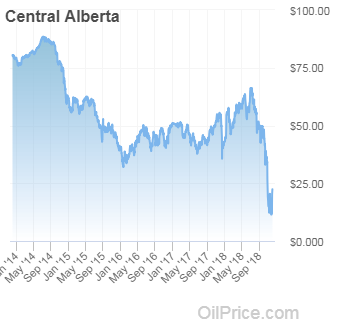The Canadian Dollar: Analysts Slash Economic Forecasts after Alberta Oil Production Cuts
- Written by: James Skinner

© Faithie, Adobe Stock
- Canadian Dollar rises broadly as oil markets rebound on Monday.
- Buoyed by Alberta government's intervention to support oil prices.
- But Alberta's actions may undermine the Bank of Canada outlook.
The Canadian Dollar rose broadly Monday as oil prices recovered from 2018 lows but developments in the domestic market have just dented the growth outlook and could have negative consequences for the currency over the coming months.
Alberta's regional government announced Monday that it will require local oil companies to reduce their production by 8.7% in 2019, an amount which is equal to 325,000 barrels per day, in an effort to lift prices of Canadian crude off from record low levels beneath $20 per barrel.
However, the production cuts will cost jobs and they could also lead to even lower levels of business investment in the province. Alberta's economy has 50,420 oil workers according to the regional government, and accounts for 10% of Canadian GDP.
"Alberta is currently producing 190,000 raw crude oil and bitumen barrels per day more than can be shipped by pipelines, rail or other means. The amount of oil that is being diverted to storage is at record highs and storage is nearing capacity," the Alberta government says.
The government is buying railcars to increase shipments to offshore markets by 120,000 barrels per day before the end of 2019 in order to get around the "transportation bottlenecks" that have crippled the Canadian oil market in 2018.
The bottom has fallen out of the Canadian oil market this year ever since the Federal Court of Appeal overturned a decision by the central government to approve the Trans Mountain pipeline, which drove the Canadian oil discount to new highs relative to its U.S counterpart West Texas Intermediate.
.jpg)
Above: Western Canadian Select oil price. Source: OilPrice.com.
Canada's oil trades at a steep discount to the U.S. benchmark in part due to differences in thickness and quality of the raw product produced north of the border, but also because of a "dearth" of pipeline capacity to facilitate the transfer of oil to refiners in offshore markets. Canada's producers are effectively captives of the U.S. market.
"The price gap is caused by the federal government’s decades-long inability to build pipelines. Ottawa’s failure in this area has left Alberta’s energy producers with few options to move their products, resulting in serious risks for the energy industry and Alberta jobs," the Alberta government says.
Canada's federal government had been attempting for some time to build a new pipeline called "Trans Mountain" that it claimed would enable the nation to export more oil to international markets, instead of sending all of it to the U.S.
A widening pool of export opportunities would support investment and jobs in the sector and to an increase in the price of Western Canadian Select. That would have benefited government finances and the Canadian Dollar.
But the Court of Appeal sided with environmentalist and indigenous opponents of the project in an August ruling, leading the federal government to give up fighting and darkening the outlook for investment, oil prices and the Loonie.
"Curtailment is projected to reduce volatility, narrow the differential by at least $4 per barrel relative to where it otherwise would have been and add an estimated $1.1 billion of government revenue in 2019-20 – money used to pay for roads, schools and hospitals," Alberta's government says.

Above: Price of Central Alberta blend of oil. Source: OilPrice.com.
Western Canadian Select prices averaged $44.45 during the 10 months to the end of October although this was due to prices having spent some time around $70 before hogging the $50 level for much of the rest of the time.
However, the time since August has been a one-way street to new lows. West Texas Intermediate has averaged $67 after having been as high as $78.90, and from spending much of 2018 perched comfortably above the $60 level.
"Some firms had already announced reductions in extraction ahead of the Alberta government’s mandated production cuts which are set to take effect next year. As a result, the economy is likely to take a hit of roughly 0.2%pts in annualized growth in the current quarter, and another 0.2%pts in Q1," says Avery Shenfeld, chief economist at CIBC Capital Markets.
Oil is important for Canada because crude and its derivatives are the nation's largest export. All of this matters for the currency because of the impact it could have on Bank of Canada (BoC) interest rate policy in the New Year.
The Bank of Canada raised its interest rate by 25 basis points to 1.75% in October and said it will go on lifting its benchmark rate over coming quarters, potentially taking the cash rate up to 3.5%.
But pricing in interest rate derivatives markets, which among other things provides insight into investor expectations for monetary policy, has shown a clear deterioration in the interest rate outlook since that time.
"Even before these revisions our forecasts were below consensus for Canadian GDP based in part on the dampening effects of slower global growth on the oil patch and other sectors," says Shenfeld. "The poor finish to Q3 GDP had already put our call for a January rate hike by the Bank of Canada at risk, so we’ll need to see some healthy readings for other sectors in the next few weeks to leave that view intact."
The USD/CAD rate was quoted -0.72% lower at 1.3190 Monday in response to the production cut and after a near-3% rise in the price of both WTI and Brent crude oil during the session.
The Pound-to-Canadian-Dollar rate was -0.60% lower 1.6807. The Loonie also notched up gains over all other G10 currencies Monday.
But if developments in the oil industry, or economic data due in December and January, continue to encourage a trend of deterioration in the BoC outlook then the Loonie could suffer further as a result.
Advertisement
Bank-beating exchange rates. Get up to 5% more foreign exchange by using a specialist provider to get closer to the real market rate and avoid the gaping spreads charged by your bank when providing currency. Learn more here




